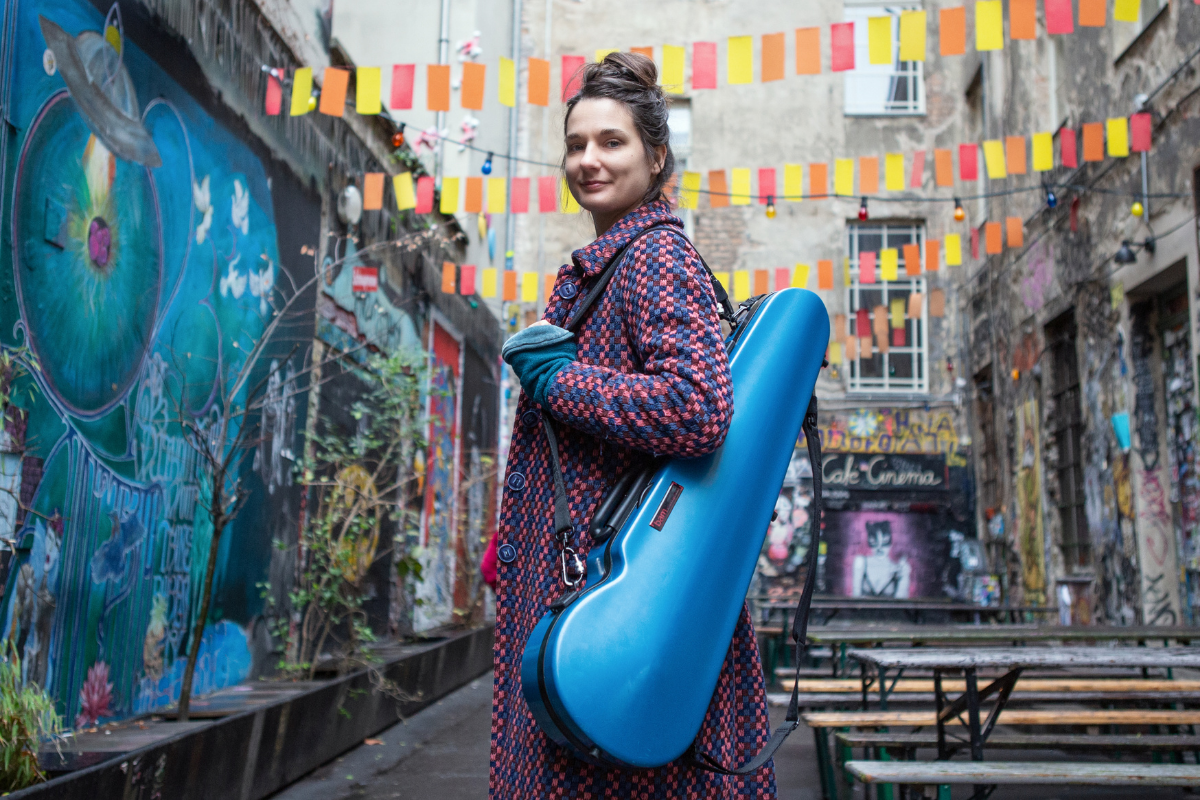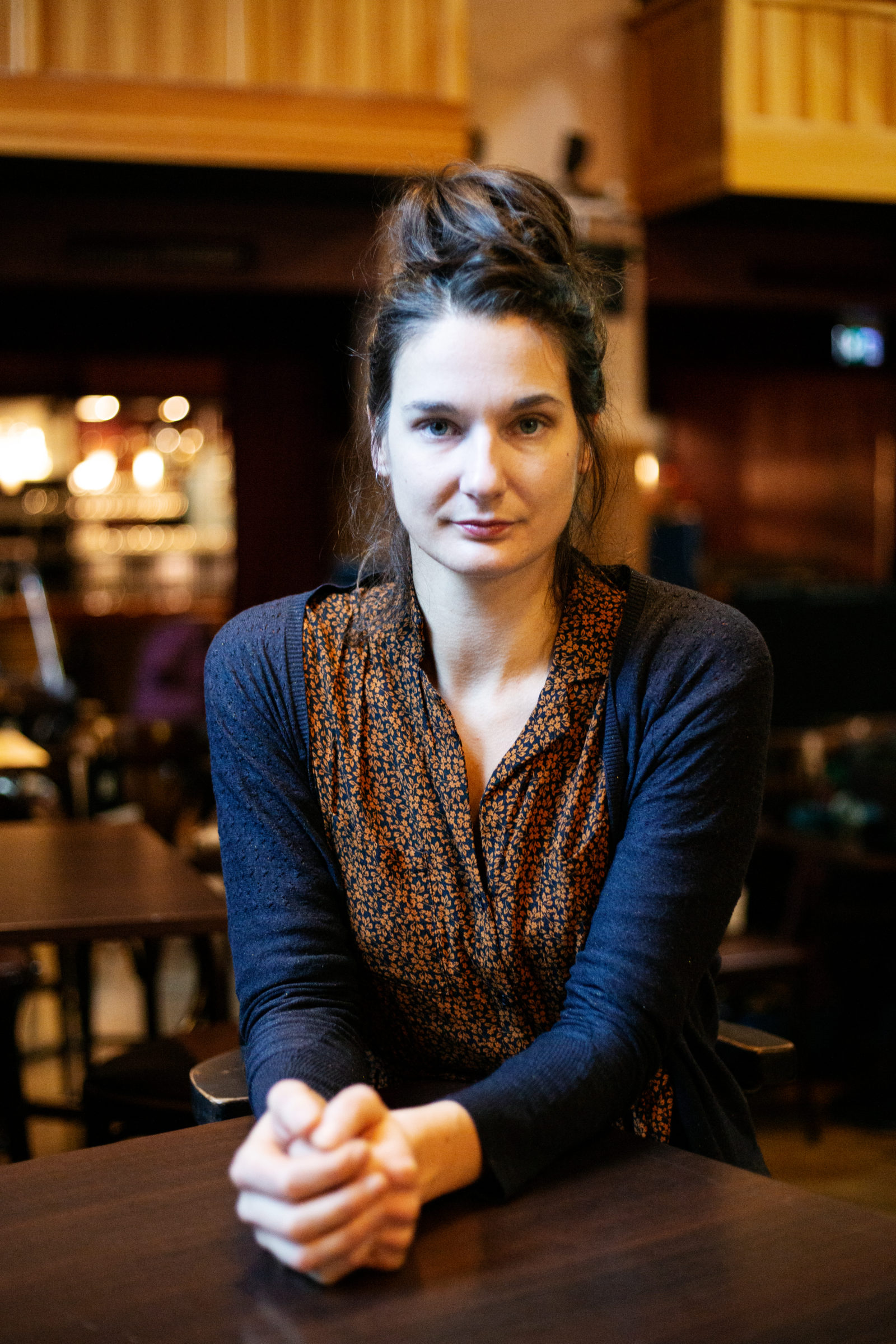Meet Dorothée Royez
It was a special pleasure to welcome classical violinist Dorothée Royez for the season of What Will Have Been. What Will Have Been is a very intimate piece, full of images and emotions, accompanied by a stirring soundtrack that combines baroque music with contemporary electro music. At the Chamäleon, Dorothée Royez joins the Circa artists Kimberley O’Brien, Hamish McCourty and Daniel O’Brien on stage to perform H.I.F. Biber’s unaccompanied Passacaglia for solo violin and Bach’s masterful Chaconne and Allemande.

Normally, orchestral playing and chamber music are more part of her everyday life, but her season at the Chamäleon is not the first time Dorothée Royez has encountered the circus. “I grew up in the city of Amiens in France, there is the Cirque Jules Verne – an imposing building designed by Jules Verne himself that still shows circus events today. As a teenager, I performed there myself once. Young artists were on the trapeze and I played the violin.”
In Amiens, Dorothée Royez attended the conservatory, where she discovered her love of the orchestral and chamber music repertoire. She completed her studies at the Staatliche Hochschule für Musik und Darstellende Kunst Stuttgart (Academy for music and performing arts) and continued her master’s degree at the Hochschule für Musik und Darstellende Kunst (Academy for music and performing arts) in Frankfurt. She gained professional orchestral experience with the National Orchestra Mannheim, the Staatskapelle Wiesbaden, the Stuttgart Philharmonic, the Württemberg Chamber Orchestra and the Braunschweig State Theatre.

The collaboration with Circa for What Will Have Been was a special challenge. The exchange between music and circus elements is fluid, with Royez playing her violin in the middle of the action rather than separated from the performers at the edge of the stage. “The pieces in the performance are very demanding and I had to get used to moving between the performers and playing without notes,” she says.
She had played Bach’s pieces before. “I love Bach. For example, when I play the ‘Chaconne’, especially with an audience but sometimes also alone, it almost feels like falling into a trance. There are so many variations, so many different harmonies and notes at the same time… As a violinist, you almost get into a flow, you travel a bit, and the world is not quite real anymore.” Royez relearned Biber’s Passacaglia for the performance of What Will Have Been. It was a piece that had always appealed to her and now she had the fitting opportunity. All the pieces have a special magic, especially when they are combined with the virtuoso choreographies of the Circa artists: “All three pieces, especially the ‘Passacaglia’ and the ‘Chaconne’ are pieces are connected with a lot of emotions, deep emotions. This is not superficial playing. For me, it has a lot to do with the earth and with humanity.”

For Dorothée Royez, this intensive collaboration with the Circa artists is a new but enriching experience: “I am happy to be on stage with such great artists. What they do is very strong, very poetic, but also funny. I’m very open to what can develop creatively during this time.”
Photos: Gianluca Quaranta


